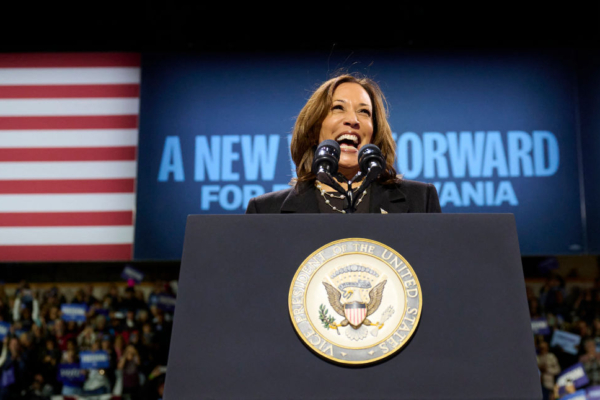In the race for the White House, the competition between Harris and Trump is intensifying compared to the Biden-Trump battle four years ago. On Monday, Harris announced the implementation of the “Blue Wall” plan, intensively holding rallies and visits in Michigan, Pennsylvania, and Wisconsin. At the same time, she is scheduled to be interviewed by Fox News on Wednesday.
The “Blue Wall” consists of swing states along the Great Lakes that have traditionally supported the Democratic Party and are industrial powerhouse states in the Midwest. Over the next six days, Harris will spend three days in Michigan, two days in Pennsylvania, and one day in Wisconsin, with multiple events and stops scheduled for each visit.
Former Democratic National Committee official Ivan Zapien noted that with only 21 days left until the presidential election, Harris launching an offensive on the Blue Wall indicates her intention not to repeat the mistake made by Hillary Clinton in 2016 – not spending enough time campaigning in these three crucial states.
At the same time, Trump held a town hall meeting on Monday in Oaks, Pennsylvania, where he also held rallies last week in Scranton and Reading. Elon Musk, a major supporter of Trump, plans to make appearances in the final weeks of campaigning in Pennsylvania.
The battleground in these three states is extremely tight in the presidential election. According to polling results compiled by Decision Desk HQ and The Hill, Harris leads Trump by only 0.7 percentage points in Pennsylvania, while Trump leads Harris by 0.8 percentage points in Michigan and by 0.1 percentage point in Wisconsin.
The analysis by The Hill points out that whether Trump or Harris can enter the White House largely depends on their ability to retain these three states. Losing any of these states would make it difficult to win the election. With the polls tightening, concerns are growing among experts about the Democrats losing the “Blue Wall.”
In Michigan, Harris has angered Arab-American voters due to her stance on the Middle East conflict, a demographic group with significant influence in the Great Lakes state.
In Wisconsin, Harris only holds a slight lead, while Trump exceeded expectations in the state in both 2016 and 2020. Therefore, analysts believe if Trump surpasses expectations again, he is likely to win the presidency.
Democratic strategist Al Mottur expressed particular concern about the battleground situation in Pennsylvania and Michigan. Despite Harris’s slight lead in these two states, the situation is highly unstable, and any advantage could change at any moment in the fiercely contested election.
In the “Blue Wall” states in the U.S., union voters play a crucial role in the election outcome. Two major unions – the Teamsters and the International Association of Fire Fighters – have already stated that they do not support Harris.
It is believed that Harris’s second path to victory lies in winning swing states like Georgia, North Carolina, and Arizona, although her chances are not high. According to RealClearPolitics’ average data, Trump maintains a lead in these states. These states have typically been won by Republican presidential candidates in the past few decades.

